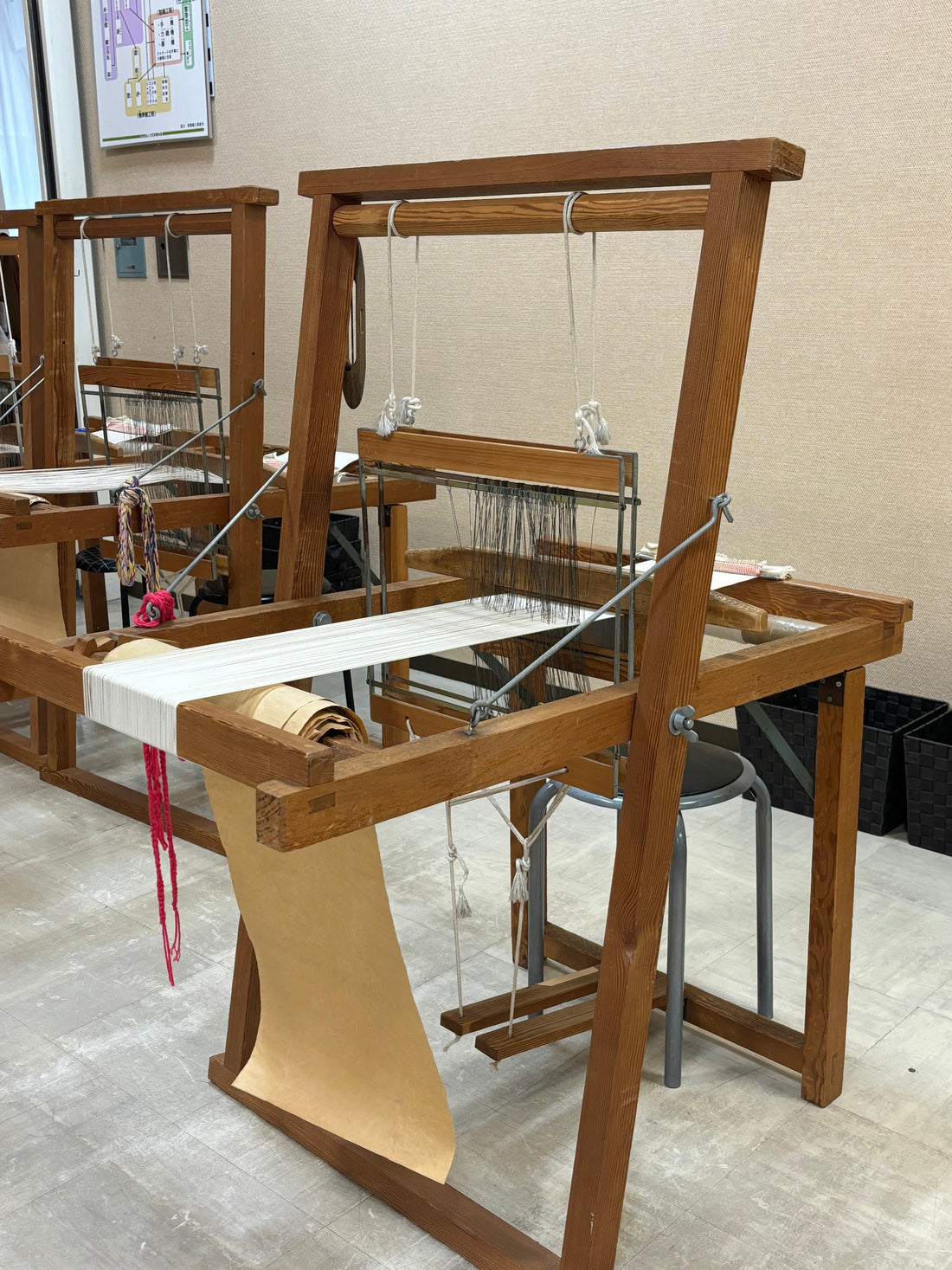
The Technology of Nishijin Weaving (1): The Evolution of the Loom
Share
In the coming series, I will be writing about the craftsmanship and techniques of Nishijin weaving.
The loom is likely one of the earliest inventions in human history. As humans lost body hair and sought ways to stay warm—and as cultures evolved, giving rise to concepts like modesty and the desire for self-expression—people began weaving natural fibers into simple crossed patterns. Over tens of thousands of years, these techniques developed into increasingly sophisticated forms, incorporating patterns and varied weaving structures.
The history of silk weaving is also ancient. The oldest known woven silk textile, discovered through excavation, dates back nearly 5,000 years. This highlights just how essential fabric has been to human culture since ancient times.
Across the world, many types of primitive looms existed. In Nishijin, weaving is believed to have evolved from simple, early looms like the jibata, where the weaver would sit on the ground and support one of the warp beams with their body, to the more advanced takabata loom. The takabata suspends the warp threads between two beams, with the loom itself incorporating a bench for the weaver. Unlike earlier looms such as the jibata, the weaver is no longer required to physically support the warp threads with their body, allowing for greater freedom and stability during the weaving process.This type of loom is thought to have been introduced to Japan from China as early as the 4th or 5th century.
Jibata
Source: 紡ぐ・織る技術の基本 | トヨタ産業技術記念館
After the introduction of the takabata, two main types of looms were used in Nishijin weaving for a long time: the hand-operated takabata (still used today for tsuzure weaving), and the sorahikibata, which enabled the weaving of complex patterns. The takabata used in tsuzure weaving is simple and features two heddles, which are crucial parts of a loom used to control the movement of the warp threads. When a loom has two heddles, the warp threads are threaded alternately through them. When the odd-numbered threads are raised, the even-numbered ones are lowered, creating a space (called a shed) through which the weft threads are passed.
In tsuzure weaving, the heddles don’t move simultaneously. Instead, one lowers while the other stays in place, forming the shed in a simplified manner. The warp threads move in a plain-weave structure, while the weft threads are woven by hand, as shown in the video below. The weaver places a design beneath the warp threads and weaves while visually referencing it. Since the pattern appears on the reverse side during the weaving process, the artisan checks the design periodically using a mirror.
I’ll explain the sorahiki loom in The Evolution of the Loom (2)